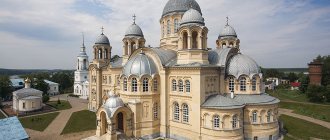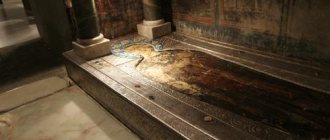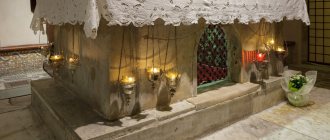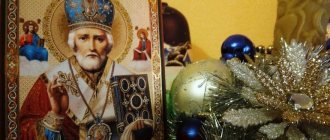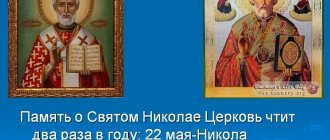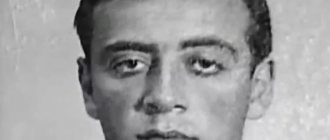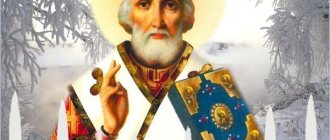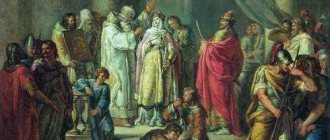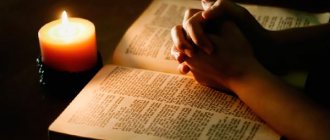March 17, 2020History, Anthropology
March 17 is St. Patrick's Day. The whole world drinks beer and gets drunk to death. But why do you need to get drunk on Saint's Day? Who is this Patrick? Did he really exist? When was this holiday invented and why did it become popular all over the world? Celtologist Tatyana Mikhailova answers Arzamas questions
Audio!
Course on Celtic culture, language, religion, fairy tales and songs
Celtologist Tatyana Mikhailova tells who the Celts were and what they mean to us today
Why does everyone drink on Saint's Day?
Isaac Cruickshank. Morning of St. Patrick's Day. 1803 National Maritime Museum / Royal Museums Greenwich
On the one hand, St. Patrick's Day was not originally a religious holiday: it was invented by Irish emigrants who found themselves in the United States to get together and not forget about their origin. On the other hand, since ancient times in Ireland it was customary to celebrate holidays vigorously; this was written about in the sagas. For example, the saga “The Intoxication of the Ulads” is known: its hero Cu Chulainn invited King Conchobar to a feast and stocked up on beer - “150 barrels of each type of beer.” The preparation of food and drink for the royal feast is also described in the saga “The Feast at the Goose Fortress”, and in many other places. So we can say that St. Patrick's Day on March 17 is not associated with religion as such, but rather with archaic rituals that are primarily social in nature.
Widespread Christianization
For decades after his arrival in Ireland, Patrick converted its inhabitants to Christianity. In Confessions he talks about thousands of baptisms. Scientists suggest that one of the reasons for the success of Patrick's mission is due to his thoughtful tactics. He communicated with the kings of Ireland and gave them gifts, trying to convert them to Christianity first. This made it much easier to baptize the rest of the residents.
Patrick's knowledge of the Irish language and culture helped him incorporate elements of traditional beliefs into his Christianity lessons. Instead of trying to harshly eradicate native Irish beliefs, he, on the contrary, introduced them into Christian traditions. For example, he allowed bonfires to be lit during the Easter celebration, because the Irish were accustomed to honoring the gods with fire. St. Patrick also superimposed the Christian cross on a circle—a symbol of the sun—to create what is now called the Celtic cross. The veneration of this symbol seemed more natural to the Irish of those times.
Mosaic depicting St. Patrick. Source: dominicanajournal.org
Although Patrick was not the most educated person, he understood the importance of spreading his ideas through education. Around 450, he founded the first Christian school in all of Ireland in the Irish city of Armagh. According to the Annals of the Four Masters - medieval chronicles of Irish history - St. Patrick opened a total of about 600 churches and baptized more than 120 thousand people. By the way, according to legend, it was Patrick who expelled all snakes from Ireland - they really don’t live there.
Who was Patrick really?
Edward Reginald Frampton. Saint Patrick, who sailed to the shores of Ireland. Circa 1912 © Diomedia
This is a very difficult question. The fact is that there are different legends about a man named Patrick. One tells of a young man from a noble Christian Romano-British family. He was born at the end of the 4th century, and in his youth he was captured by Irish pirates and enslaved. Six years later he managed to escape from Ireland to Gaul, and then to Rome. The second is about a man who in 432 began preaching Christianity in Ireland, calling himself a bishop (although it is unclear who ordained him and where). In the 7th century, the first Latin lives of Patrick appear, in which these two stories merge into one.
However, Church of Ireland researchers doubt that this is the same person. Back in the 1940s, historian Thomas O'Rahilly hypothesized the existence of two Patricks and proposed calling them Patricius Junior and Patricius Senior (that is, “junior” and “senior”). This assumption allows us to reconcile the spread of dates for the death of the saint in the Irish annals - from 461 to 492 or even later.
The main source of biographical information about Patrick was the “Confession,” allegedly written by him. Its early editions have not survived - only a list from 630, the authenticity of which remains in question. In 1905, Irish historian John Bury suggested that Patrick did not exist at all, and that his biography was the product of a compilation of monks. In 1962, the work of Irish law specialist, philologist and linguist Daniel Binchy was published: from his point of view, Patrick not only existed, but also wrote the Confession.
In a word, the problem of restoring the real biography of the Irish baptist is very complex and does not have a clear solution. But in some ways this is not so important: over many centuries his legendary biography has built up quite fully, and the Irish believe that the noble young man really returned to lead the people out of the darkness of paganism, his staff was given to him directly from Christ, and that it was Patrick expelled all the snakes from the island. True, there are legends that he actually did not completely expel them, but ordered them to hide in swamps, mountains, caves and not show themselves to people as long as faith in Christ and Patrick..
other beliefs divorced from reality
How they came up with medieval history
Dracula, the right of the first night, the Holy Crown and other examples of exploitation of the Middle Ages
Saint Patrick of Ireland
Memorial Day: March 17(30)
Most of what we do know about the life of St. Patrick comes from his surviving writings (Confessions, Letter to Coroticus, Shield of St. Patrick, a few others) and from poetic hymns written shortly after his death. We know relatively little about St. Patrick for certain, but many legends that describe his miraculous deeds remember him.
Patrick (then his name was Sukkat) was born around 387, in Britain. He was, as he himself writes, the grandson of a Christian priest and the son of deacon Calpurnius, who belonged to a noble family and was a Roman decurion (official rank). He was from the Britons, and the boy’s mother, a close relative of St. Martin of Tours, the patron saint of Gaul, was from the Franks. At the age of sixteen, the saint was driven into slavery from his father’s estate. Those who attacked the estate (these were the exiled sons of the British king) killed his father, his sisters went missing. Saint Bede the Venerable says that in those years all the British soldiers went, by order of the Roman authorities, to Rome to defend the city, leaving their lands defenseless. This led to many lawlessness and dangers in those parts. Patrick was sold into slavery in Ireland, where he remained in obedience to his master until he escaped, fulfilling the command received in revelation from God. Later, he often received such revelations from Victor, the angel of God, who often appeared to him in the form of a bird.
In slavery, the saint tended sheep in secluded places, mountains and forests. There, contemplating creation, he learned to believe and pray, growing in love for God. St. Patrick became a true man of prayer, reaching the heights of prayerful contemplation. Through his faith-filled prayers, God often performed miracles. May the Lord, through the intercession of St. Patrick, grant us the gift of prayer and love of prayer, similar to those with which He endowed His illustrious minister.
Although the saint himself writes that he fled, legends say that he did not want to leave without the owner’s permission. He also demanded as payment for freedom an ingot of gold the size of Patrick’s own head. Angel Victor then ordered the young man to follow the wild boar, who dug this ingot out of the ground. When the saint reached the coast, where, according to the angel, a ship was waiting for him, there, according to hagiographic stories, he was captured by the owner of the coast and again sold into slavery. But God punished the villain - when he and his household looked at the copper pots they received as payment, their hands stuck tightly to the metal. The unlucky businessman repented, was forgiven by Patrick, bought him out of slavery and provided him with money for the journey. Legend says that upon returning as a bishop, the saint baptized him. After a long journey, described in “Confession,” the saint returned to his native land.
There the same angel again appeared to him in a vision and commanded him to return to Ireland with the preaching of Christ. But first he had to get an education. To do this, the saint went to Gaul (present-day France), where he studied under the guidance of St. Herman, Bishop of Auxerre (who ordained him a deacon under the name Patrick) and the monks of the monastery of St. Honorat on Fr. Lerins (near modern Cannes in Provence), one of the strongholds of monastic life in Gaul. Soon, St. Germanus, going to Britain to fight the heresy of Pelagius (who believed that a person could achieve salvation only by his own deeds and without the grace of God), took with him St. Patrick, his disciple. Together with a group of priests, they walked around Britain, refuting heresy and returning people to God, performing great miracles of healing. They say that one day St. Patrick suggested that St. Herman fast for the sake of converting one of the cities that had fallen into heresy. However, the city did not convert and at the end of the third day of fasting the earth opened up and swallowed it up. The place where the Saints and their companions fasted later became a traditional place where local priests gathered to fast. During this journey, St. Herman often not only fought against heresy, but also converted local rulers to Christ - this later served as an example for the Irish mission of St. Patrick himself.
As a result of his training, St. Patrick learned everything that was necessary for his future mission. The saint had a special love for the Word of God - his “Confession” speaks about this, for example. In this short narrative, he refers to the Holy Scriptures approximately two hundred times, either explicitly or implicitly by hints. May the Lord grant today's Christians the same love for His Word, His Church and His will.
From his visions, St. Patrick knew that he must go to Ireland to preach. So that this can be accomplished, he goes to the then Roman bishop, Pope Celestine, who blesses this mission. Ordained bishop, St. Patrick heads to Ireland, where he arrives in 432. He spends all the subsequent years of his life wandering, converting and baptizing thousands of people. Usually, first, following the example of his teacher, St. Patrick tried to convert the leader of one or another clan to Christianity, and the rest followed his example. The Lord gave him the gift of a great miracle worker, as lives and legends tell about. Many people, having heard his preaching, not only received baptism, but also completely devoted their entire lives to Christ, becoming priests and monks.
The saint who affirmed Christianity had, of course, to resist pagan beliefs and endure clashes with supporters of paganism. When he went to the capital of Ireland, Tara, to preach there at Easter, the pagan king ambushed him in the forest. The saint and all his companions along the way sang a hymn-prayer composed by him, which is now known as the “Shield of St. Patrick” or “The Deer’s Prayer.” And a miracle happened - the warriors, instead of the clergy, saw only a herd of deer passing by. According to the life, before his death, the angel promised the saint that this prayer would always protect those who read it with faith from evil.
Then the pagan holiday was just approaching and, by decree of the High King Loegaire, it was forbidden to light any fires before the ritual pagan fire in Tara was lit. However, Patrick and his companions lit a huge fire near the capital in honor of Easter. “If this fire is not extinguished tonight,” the Druid priests told the king, “it will never go out.” By order of the king, the soldiers tried to extinguish the flames and kill the saint, but did not succeed in either, since they were protected by the power of God. The next morning, St. Patrick, in full vestments and accompanied by a procession of his companions, headed to Tara. There he spoke about God the Trinity, showing a shamrock clover to explain his faith to the Irish. Despite the resistance of the pagans, the High King was forced to allow Patrick to preach throughout the country. It was a great day in its history. The prophecy of the Druids came true - the fire of faith lit by Patrick never went out, and the clover shamrock later became one of the symbols of Ireland.
Lives and legends describe many other miracles performed by St. Patrick. Some believe all these stories, others - not all, but one thing is certain - God always accompanies a person who, with faith and dedication, devotes himself to fulfilling His will. For God, as St. Patrick believed and as we believe, nothing is impossible.
St. Patrick died in 461, having first received Holy Communion from the hands of a priestly companion. They say that the place of his death was surrounded by singing birds, and many thought that they were angels of God who took the form of birds, as the angel Victor did when he came to the saint in visions.
It is believed that St. Patrick composed his “Confession” shortly before his death, sensing its approach. Its simple style will help us truly get to know St. Patrick and, in his own words, “understand the desire of his heart.”
May the Lord Almighty, for whom nothing is impossible, be pleased, through the prayers of St. Patrick, in these days to grant to His Church saints, ministers and teachers similar to him in spirit, so that they lead people to Christ, who reigns with the Father and the Holy Spirit forever and ever. Amen.
For example, one day he was visiting the house of the leader of a clan, who accepted the true faith along with his household. Young Benignus (Benen), the chief's son, was especially captivated by the teachings of the Gospel and the meekness of the saint. When St. Patrick was sleeping, he gathered fragrant flowers and surrounded his bed with them. With the permission of his father, he followed the saint and was always with him, becoming his disciple, and after the death of the saint, the heir to his episcopal see.
If Patrick is not Irish, why has he become a symbol of Ireland?
James Barry. Baptism of the King at Cashel by Saint Patrick. 1800-1801 National Gallery of Ireland
Because he baptized Irish pagans into Christianity. According to the Confession, an angel appeared to slave Patrick and ordered him to flee Ireland: a ship was waiting for him on the seashore, sailing to Gaul. The angel was sent by God, who wanted the young man to baptize the Irish, so then Patrick returned back to the island. There he preached Christianity, fought against pagan kings, Druid priests, as well as the teachings of the British theologian Pelagius, whose teaching (and in fact heresy) spread widely throughout the country. Pelagius believed that original sin does not affect human nature and that everyone can communicate with God directly, without the mediation of the Church. Pelagianism was condemned at the Council of 418, and in 431 Pope Celestine sent Bishop Palladius to Ireland to return Irish Christians to the fold of the Catholic Church. Therefore, the same Thomas O'Rahilly believed that Patrick and Palladium were one person. In any case, it is Patrick, an alien from outside, who is assigned the role of the savior of the people, the deliverer from darkness and other troubles.
Death
The mysterious Christian hero, of course, died under unclear circumstances. Legends say that the priest, anticipating death, climbed to the top of Mount Krokh and sat there for 40 days and the same number of nights. A day before his death, Patrick confessed to the bishop, and at the same time threw a bell with prayers from the mountain to strengthen the Christian faith on Irish soil. The angels heard the calls and picked up the bell.
Stone on the supposed grave of St. Patrick
Some admirers of the saint are sure that Patrick is buried in the city of Downpatrick in the north of Ireland. Others believe that the grave should be looked for in the villages of Soule or Armagh. However, the difference in positions is explained by legend: supposedly after death, the saint’s relics were placed in a cart drawn by mad bulls, and where the animals decided to stop, there the grave would be. The first night, angels guarded the burial, and soon two certain peoples launched a massacre for the possession of Patrick’s relics. However, the war ended in a draw, because God protected the saint who had retired.
When did this day become a popular holiday? What talented marketer came up with it?
1 / 4
St. Patrick's Day Parade in Union Square in New York City. 1870s Museum of the City of New York
2 / 4
St. Patrick's Day Parade on Fifth Avenue. New York, 1907 Library of Congress
3 / 4
Erskine Nicole. March 16, 17 (St. Patrick's Day) and March 18. 1856 National Gallery of Ireland
4 / 4
Celebrating St. Patrick's Day. Sydney, 1937 State Library of New South Wales
This happened around the middle of the 18th century, but not in Ireland, but in America, where there were many Irish emigrants who began to actively celebrate this day. Before this, the date of St. Patrick’s death—March 17—was remembered only in narrow church circles. In 1761–1762, parades were held in several cities, and since then St. Patrick's Day has been celebrated by Irish emigrants not only in the United States, but also in Australia, Canada, New Zealand and even Argentina. In Ireland itself, then still part of the United Kingdom, St. Patrick's Day came only in 1903: March 17 was officially declared a national holiday and day off. But the first St. Patrick's Day parade took place in Dublin in 1931, ten years after the country gained independence. In the 1990s, a real advertising campaign began to promote St. Patrick. So the tradition of drinking dark, heavy, strong beer on this day also turned out to be imposed from above (previously in Ireland, on March 17, pubs were closed so that people would drink less). It is unknown who exactly came up with all this, but the definition of “talented marketer” is very accurate.
Traditions
On St. Patrick's Day, costume parades take place in the central streets of Dublin, live music is played in pubs, and fireworks displays are held in the evening. On this holiday, it is customary to wear everything green - this is one of the colors of the Irish flag, the color of the shamrock and the color of Ireland itself, which is called the Emerald Isle (most of the territory is covered with meadows).
In Ireland, there is a unit of measurement for alcohol consumed during this day, the so-called “Patrick's glass”. According to tradition, a shamrock, which is the main attribute of the holiday, is placed in a glass. The shamrock does not have official status, although it is one of the symbols of the country. His image is not on coins, banknotes, or stamps. At the same time, the shamrock is present on the coat of arms of the United Kingdom of Great Britain and Northern Ireland.
The symbols of the holiday also include leprechauns - characters from Irish folklore who are able to fulfill the wishes of those who can catch them (traditionally, a leprechaun was depicted as an adult the size of a three-year-old child).
What did Patrick himself say about libations?
Adrian Collart. Miracles of St. Patrick. Scenes from the life of St. Patrick. 1603 National Gallery of Ireland
This is unknown. Medieval historian Dorothy Bray, in her Index to the Motifs of Irish Lives, writes that Patrick turned water into wine, referring to the three-part life of St. Patrick - Vita Tripartita. However, the text of the life describes a slightly different incident: young Patrick once scooped up water from the river with a jug and turned it into honey, which miraculously cured all diseases. So there is no definite answer to the question of St. Patrick's attitude to the libation. Another thing is Saint Brigid. She not only brewed beer in large quantities and willingly treated everyone to it, but also miraculously accelerated its fermentation, so that the process, which took several days, was reduced to one hour.
Early life
The man who would become known as Saint Patrick, Apostle of Ireland, was born in Great Britain around 386 AD. Much of his life is unknown to historians and cannot be verified, although some sources listed his birth name as Mevin Succat, with the name Patrick later adopted during his religious travels or ordination.
His father, Calphurnius, was a deacon from a Roman family of high social standing. Patrick's mother, Conchessa, was a close relative of the great patron Martin of Tours. Patrick's grandfather, Pontius, was also a member of the clergy.
Surprisingly, Patrick himself was not raised with a strong emphasis on religion. Education was not particularly emphasized during childhood either.
Later in life this would become a source of embarrassment for the spiritual icon, who would write in his Confessions: “I blush and am very afraid to reveal my lack of education.”
Why is Patrick associated with clovers and leprechauns?
Stained glass window depicting St. Patrick holding a clover leaf and a leprechaun © Jubilee Museum and Catholic Cultural Center, Columbus, Ohio
Almost all Christian holidays are associated with days revered by pagans. There is an Irish proverb that can be translated roughly as follows: “Like salmon in the middle of a stream, so is Patrick’s Day in the middle of spring.” Indeed, spring for the Irish begins on February 1, St. Brigid's Day, when daylight hours noticeably increase. March 17, therefore, falls in the middle of spring, that is, it marks a turn towards warmth and light. Clover is an archaic symbol associated with sun worship. A conventional image of a shamrock can be found in Ireland on the walls of the so-called New Grange, a religious building erected about five thousand years ago. In order not to abandon the ancient symbol, the Irish rethought it: a legend appeared that with the help of three leaves on one stem, St. Patrick showed the dogma of the Trinity. Well, leprochans, or leprechauns, are forest dwellers who come to people on warm days.
Childhood and youth
The early biography of St. Patrick is mysterious and vague, based on his own memoirs, and also consists of assumptions and conjectures of historians. The exact place of birth, however, as well as the year, could not be established (the years of his life fall in the middle of the 5th century). In Confessions, a man mentions the place of Bannawem and Ventre.
Saint Patrick
The English scholar Charles Thomas suggested that this was a British village in lands colonized by the Romans. It is known that Patrick's father Calpurnius is a Roman officer and deacon. Grandfather Potit also served as a priest.
Partik, under the name Magon, was born into a wealthy family that had a country estate and even slaves. Grew up with two sisters. In his memoirs he admits his own lack of education, however, judging by the abundance of errors in works written in Latin, this is understandable. But here and there a man suddenly talks about the brilliant education he received in his father’s house.
Saint Patrick in his youth
At the age of 16, the young man shared his slave share with thousands of compatriots. Patrick was stolen from his home and taken to Ireland, where he was forced to herd flocks of sheep. Who exactly kidnapped the child is also a mystery: perhaps robbers flying the flags of the Irish king Niall, or people from Scotland and the Scots, representatives of the Celtic tribes.
The owner gave the future priest a nickname, calling him Patricius, which means “noble man, patrician.” Since then, the man no longer remembered his former name, having carried the “stigma” of the humiliations of captivity all his life, which is quite understandable. In captivity, he believed in the true God, gave praise to the Almighty all day and night, allegedly reading 100 prayers a day. The name became, as it were, a starting point on the path to religion.
Saint Patrick with children
One day, a young man had a dream in which a voice promised a quick return to his homeland. Here the spiritual biography of the saint echoes motifs from the adventures of the Old Testament Moses. Patrick decided to escape; when he reached the sea, he saw a ship. With difficulty, but the captain agreed to take the penniless traveler on board and did not regret it - along the way, thanks to sincere prayers, God sent the crew food from a herd of pigs and honey.
For unknown reasons, Patrick again fell into slavery among the desert tribes, now for only 60 days. With considerable difficulty, the young man reached home, where in a dream he was called to return to Ireland by a certain angel:
"Holy brother, we beg you, come and convert us."
What kind of preacher and writer was Patrick?
Manuscript page of St. Patrick's Confessions. Armagh, circa 807 Trinity College Dublin Library
During the years spent as a slave to the Irish, Patrick learned local customs well: later becoming a preacher, he acted quite skillfully. There are legends about Patrick’s competitions with local Druids, in which he rightly saw the main enemies of Christianity. One summer day the Druids Druids were priests among the ancient Celtic peoples. The fields were filled with snow. Everyone was shocked by their power. But Patrick ordered the snow to be removed because the crops would die. “The snow will melt itself later,” answered the Druids. Then Patrick crossed the fields, and there was no snow. Another time, the Druids milked a bucket of milk from a bull. Everyone is shocked again. Patrick crossed the bucket, and everyone saw that it was not milk, but mucus and blood. The bull lay there and died. Patrick poured the bucket onto its back and the bull came to life. In other words, Saint Patrick constantly demonstrated his superiority over local magicians, and his preaching was not philosophical, but visual.
Patrick's most famous text is the Latin Confession, in which he talks about his life. And then suddenly a man appears before us, tormented by various kinds of reproaches, suspicions of theft, vanity, and so on. He constantly has to make excuses. According to the Confessions, his enemies were not only the Druids and pagan kings, but also local learned men, Christians and scribes, to whom Patrick was a stranger.
In “Confession,” Patrick talks about how in his youth, while still in Britain, he committed a certain sin and told a close friend about it. And that one - to everyone around! Therefore, Patrick repents of something that, perhaps, no one would have known. What kind of sin it was is unknown: perhaps participation in pagan rituals, perhaps sex, or perhaps he stole pears, like St. Augustine. In any case, the mention of youthful sin is not accidental: this is an obligatory episode in the confession genre.
Fatal kidnapping
According to the most popular versions of historians, Saint Patrick was born at the end of the 4th century - somewhere between 373 and 390. At home, in Roman Britain, he was known under the name Mavin Succat. Mavin grew up in a wealthy deacon's family. Apparently, he did not receive the best quality education and did not show much interest in religion as a teenager. Mavin's indifference to theology at that time is also described in the Confessions, an autobiographical apologetic text written in Latin by St. Patrick himself.
Mavin's life, according to his own story, changed dramatically at the age of sixteen. He was kidnapped by robbers and sent to Ireland along with other prisoners. There, far from civilization, he was forced to work as a shepherd. Mavin spent six whole years in slavery and, surprisingly, later recalled the period of captivity as the most important in his formation. Alone, he prayed a lot, thinking that the kidnapping was a punishment for his lack of faith in his youth. In his attempts to escape home, the young man was subjected to another sixty-day slavery, but ultimately he still managed to reach Roman Britain.
Roman Empire in Britain. (spacebattles.com)
As St. Patrick states in his Confessions, it was during this period that he began to experience visions. First, the saint said, God showed him the need to return home, and then Mavin heard the voice of an angel calling him to return to Ireland and engage in religious missionary work there. Patrick devoted many years upon his return to religion. Historians suggest that he spent several years in Gaul, where he studied theology, received the rank of deacon and the name Patricius (Patrick). He returned to Ireland, apparently already in the rank of Bishop.
Is this day grassroots culture or did Joyce respect Patrick too?
Celebrating Bloomsday. 1962 © James P. O'Dea / National Library of Ireland
Joyce probably did not have much sympathy for Patrick, since he generally had a bad attitude towards the Church and preferred him to the day he invented, Bloomsday, or Bloom's Day. On June 16, 1904, Joyce met his future wife Nora and later immortalized this day in Ulysses. Already in 1924, Joyce fans began to celebrate Bloomsday by reenacting the route of the hero of Leopold Bloom's novel through Dublin, the hero of the novel Ulysses (1922). At the same time, there is no need to consider St. Patrick’s Day a grassroots holiday: as we said above, it is not a folk holiday, but a holiday brought down from above and which did not exist in the folk tradition.
course for those who prefer bloomsday to patrick
James Joyce and the novel "Ulysses"
How did James Joyce become a writer? What do you need to know about his era and Ireland at that time to read the novel?
Enslaved as a teenager
When Patrick was 16 years old, he was captured by Irish pirates. He was brought to Ireland where he was sold into slavery in Dalriada. There his job was to take care of the sheep.
Patrick's master, Milchu, was the high priest of Druidry, a pagan sect that at that time had great religious influence in the country.
Patrick came to view his enslavement as God testing his faith. During the six years of captivity, he became deeply devoted to Christianity through constant prayer. In his vision, he saw the children of pagan Ireland reaching out to him and becoming increasingly determined to convert the Irish to Christianity.
What places in modern Ireland are there to venerate St. Patrick?
1 / 4
St Patrick's Cathedral in Armagh. 2009 Wikimedia Commons
2 / 4
Presumed burial site for the remains of St. Patrick. Downpatrick, 2006 Wikimedia Commons
3 / 4
Sacred springs in Struella. 2022 © TripAdvisor
4 / 4
Cashel Castle. 2004 Wikimedia Commons
First of all, this is Armag - a monastery in Northern Ireland, according to legend founded by Patrick in 444. Of course, this could not have happened without the legends and traditions that arose later. Having received land from the local ruler to found a monastery, Patrick allegedly began to wait for a sign that would show him a specific place. And the sign was sent. Patrick saw a mortally wounded fawn that suddenly came to life and stood up. So it became clear that this place is not simple, but special.
Another place of veneration is the city of Downpatrick, where, according to one version, Patrick's grave is located. There is also a tradition of climbing Croagh Patrick Hill in Northern Ireland, where the saint tended sheep (however, there is no exact information that this happened exactly there).
In general, folklore tradition easily attaches the label “Patrick was here” to any place of some interest. Let's name two more, although in fact there are more. One of them is located in Northern Ireland and is called Struell Wells. Even in pagan times, there were sacred springs there, and Patrick realized that he could not prevent people from honoring these waters. Then he decided to sanctify them: for three nights in a row, naked Patrick lay in the icy water and sang psalms, then crawled out for a while, sat on a stone chair, dozed off and again plunged into the icy water. For a long time, this place was a cult: it was believed that visiting the spring and sitting on St. Patrick’s chair, that is, on a piece of strangely shaped rock, would heal the sick. It is interesting that the peak of pilgrimage does not occur on March 17, but on June 21, the pagan day of the summer solstice. This has been the custom since ancient times: on this day it was customary to come to the sacred spring.
Another location is the monastery and castle of Cashel in the province of Munster. There is a slab stone on which, according to legend, Patrick baptized King Aengus. The saint accidentally pierced the king's foot with the end of his staff, and the stone was covered in blood, traces of which are still visible. During the ceremony, Patrick looked the king in the eyes and did not notice that he was wounded. Patrick later asked Angus: "Why didn't you say you were bleeding?" “I thought it was part of the ritual,” replied the king.
Saint Patrick is a famous saint revered by almost all Christian denominations
Saint Patrick of Ireland (Patricy) (English: Saint Patrick; Latin: Sanctus Patricius, Sanctus Patricus; Irish: Naomh Padraig) is a Christian saint, patron saint of Ireland and Nigeria. Revered throughout the Christian world.
1191
this year one of the most famous temples was built - St. Patrick's Cathedral in Dublin
Such veneration is common in Catholicism, in certain Protestant churches (for example, in the Anglican, Presbyterian, Lutheran) and the Russian Orthodox Church.
Many cathedrals and churches around the world are dedicated to St. Patrick, the most famous of which is St. Patrick's Cathedral in Dublin, built in 1191.
St Patrick of Ireland, stained glass window in Auckland's Christ Cathedral. Saint Patrick is a revered saint in the Christian world. Photo: upload.wikimedia.org
Most of what we do know about the life of St. Patrick comes from his surviving writings (Confessio, Epistola ad Coroticum, Shield of St. Patrick, several others) and from poetic hymns written shortly after his death.
We know relatively little about St. Patrick for certain, but many legends that describe his miraculous deeds remember him. As the author of the Confessions, written in Latin, Saint Patrick is considered the founder of Irish literature.
